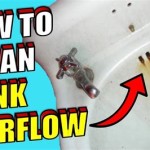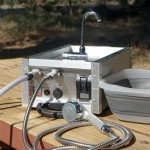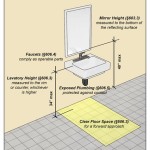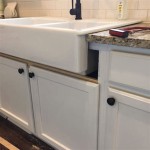Sink Stopper Stuck In Closed Position: A UK Guide
A sink stopper stuck in the closed position is a common plumbing issue experienced in households across the UK. While seemingly minor, a blocked sink can quickly become an inconvenience, preventing the use of the sink for washing hands, dishes, or other essential tasks. This article aims to provide a comprehensive overview of the potential causes, troubleshooting steps, and preventive measures related to a stuck sink stopper in the UK context.
Understanding the mechanics of the sink stopper is the first step in addressing the problem. Most bathroom and kitchen sinks in the UK utilise a pop-up stopper mechanism, often controlled by a lever or push-button located near the tap. This lever is connected to a pivot rod which, in turn, engages with the stopper. When the lever is moved, the pivot rod rotates, either lifting or lowering the stopper to open or close the drain. This system, while relatively simple, is prone to malfunctions due to the accumulation of debris, corrosion, or misalignment of components.
Identifying Common Causes of a Stuck Sink Stopper
The reasons behind a sink stopper's inability to open are varied, but several key culprits consistently emerge as the primary contributors. These encompass material build-up, mechanical failures, and issues arising from improper installation or maintenance.
One of the most frequent causes is the accumulation of hair, soap scum, food particles, and other debris around the stopper and pivot rod. Over time, this build-up can harden and solidify, effectively preventing the stopper from moving freely. The pivot rod itself may become encrusted with grime, hindering its ability to rotate and engage properly with the stopper.
Corrosion is another significant factor, particularly in areas with hard water. The minerals in hard water can react with the metal components of the stopper mechanism, leading to rust and corrosion. This corrosion can seize the moving parts, making it impossible for the stopper to open or close correctly. The pivot rod and the area within the drain where the stopper seats are particularly susceptible to corrosion.
Mechanical failures, such as a broken pivot rod or a detached connecting arm, can also lead to a stuck stopper. The plastic components commonly used in these mechanisms can become brittle over time, especially with exposure to hot water and harsh chemicals. The connecting arm, which links the lever to the pivot rod, can also become loose or detached, resulting in a lack of control over the stopper's movement.
Misalignment of the linkage is a frequent issue. If the pivot rod is not properly aligned with the stopper, it may not be able to lift it effectively. This misalignment can occur during installation or as a result of accidental bumps or adjustments to the lever mechanism. Even slight deviations from the intended alignment can prevent the stopper from functioning correctly. Furthermore, attempting to force the lever can worsen the misalignment, potentially damaging the components.
Finally, improper installation can be a long-term cause of problems. If the sink stopper assembly was not installed correctly in the first place, it may be prone to malfunction from the outset. Loose connections, incorrect positioning of the pivot rod, or inadequate sealing can all contribute to future issues with the stopper.
Troubleshooting and Unblocking a Stuck Sink Stopper
Before resorting to professional plumbing assistance, several troubleshooting steps can be taken to attempt to unblock a stuck sink stopper. These measures range from simple cleaning techniques to more involved disassembly and realignment procedures.
The first step is to visually inspect the area around the stopper and the lever mechanism. Look for any obvious signs of debris build-up or corrosion. If visible, carefully remove any loose hair, soap scum, or other particles using tweezers or a small hook. Avoid using sharp objects that could damage the stopper or the drain itself.
Next, try gently manipulating the lever to see if there is any movement or resistance. If the lever feels stiff or is not moving smoothly, apply a small amount of lubricant, such as WD-40 or silicone spray, to the pivot rod and the connecting arm. This can help to loosen any corrosion or build-up that is preventing the mechanism from moving freely. Allow the lubricant to penetrate for a few minutes before attempting to move the lever again.
If the lever is moving freely but the stopper remains stuck, the next step is to attempt to remove the stopper itself. This usually involves unscrewing or lifting the stopper from the drain. Some stoppers have a small screw or clip that secures them in place. Once the stopper is removed, thoroughly clean it and the surrounding drain area to remove any accumulated debris. Check the stopper for any signs of damage or wear and tear. If the stopper is damaged, it may need to be replaced.
Next, locate the pivot rod. This is typically located under the sink, connected to the drainpipe. Loosen the nut that secures the pivot rod in place. Be careful not to remove the nut completely, as this could cause water to leak. Once the nut is loosened, carefully pull out the pivot rod. Inspect the pivot rod for any signs of corrosion or debris build-up. Clean the pivot rod thoroughly using a brush and a suitable cleaning solution. Check the rubber or plastic seal around the pivot rod for any damage or wear and tear. If the seal is damaged, it may need to be replaced.
While the pivot rod is removed, inspect the drain opening. Use a small hook or wire to remove any debris that may be blocking the drain. Be careful not to push the debris further down the drainpipe. Once the drain opening is clear, re-insert the pivot rod and tighten the nut. Make sure the pivot rod is properly aligned with the stopper mechanism. Test the stopper by moving the lever to see if it is now opening and closing correctly.
If the stopper is still stuck, it may be necessary to disassemble the entire drain assembly. This involves disconnecting the drainpipe from the sink and removing the entire drain fitting. This is a more complex procedure and may require some plumbing experience. If you are not comfortable performing this task, it is best to consult a professional plumber.
If the drain assembly is disassembled, thoroughly clean all of the components, including the drainpipe, the drain fitting, and the stopper mechanism. Check for any signs of damage or wear and tear. Replace any damaged or worn parts. Reassemble the drain assembly, making sure all of the connections are tight and secure. Test the stopper by moving the lever to see if it is now opening and closing correctly.
Preventive Measures to Avoid Future Stopper Issues
Implementing proactive measures is crucial to minimizing the likelihood of a stuck sink stopper. Regular maintenance and careful usage habits can significantly reduce the accumulation of debris and the risk of corrosion, extending the lifespan of the stopper mechanism.
Regular cleaning is paramount. Making a habit of rinsing the sink thoroughly after each use, paying particular attention to removing any hair, soap scum, or food particles, will prevent these materials from accumulating and solidifying around the stopper. A simple rinse with hot water can help to flush away loose debris before it has a chance to cause problems.
Using a drain strainer is an effective way to catch hair and other debris before they enter the drainpipe. These strainers are available in various sizes and materials and can be easily placed over the drain opening. Regularly cleaning the strainer is essential to prevent it from becoming clogged and restricting water flow.
Periodic flushing with hot water and a mild detergent can help to dissolve any build-up that may have accumulated in the drainpipe. Pouring a kettle of boiling water down the drain once a week can help to keep the drain clear. Be cautious not to use boiling water on PVC pipes, as this can damage them. A mixture of baking soda and vinegar can also be used to clean the drain. Pour a cup of baking soda down the drain, followed by a cup of vinegar. Let the mixture fizz for about 30 minutes, then flush with hot water.
Avoiding the disposal of grease, oil, and food scraps down the drain is crucial. These substances can solidify in the drainpipe, creating a sticky residue that attracts hair and other debris. Dispose of these materials in the trash instead. Consider using a grease disposal container to collect used cooking oil and grease. These containers can be easily disposed of at your local recycling center.
Checking and maintaining the pivot rod and lever mechanism regularly can also prevent problems. Periodically inspect the pivot rod for any signs of corrosion or debris build-up. Clean the pivot rod with a brush and a suitable cleaning solution. Lubricate the pivot rod and the connecting arm with a small amount of lubricant, such as WD-40 or silicone spray. Make sure the pivot rod is properly aligned with the stopper mechanism. Tighten any loose nuts or screws. Replace any damaged or worn parts.
Consider using a descaling solution periodically, especially in areas with hard water. These solutions can help to dissolve mineral deposits that may have accumulated in the drainpipe and around the stopper. Follow the instructions on the descaling solution carefully. Be cautious not to use harsh chemicals that could damage the drainpipe or the stopper mechanism. Regular use of a water softener can also help to prevent the build-up of mineral deposits.
By adopting these preventive measures, the frequency of sink stopper malfunctions can be significantly reduced, saving time, money, and the inconvenience of dealing with a blocked sink.
I Closed My Sink Drain Stopper And Now It Won T Open Again Is There Any Way That Can Repair This Without Hiring A Plumber Quora

How Do I Fix A Stuck Push Down Sink Plug 4 Ways To Free Pop Up

How To Fix A Bathtub Or Sink Pop Up Stopper

Plumbing How Can I Remove The Stopper From My Sink Home Improvement Stack Exchange

How To Repair A Bathroom Sink Stopper

Plumbing How Can I Unclog A Sink When The Drain Stopper Cannot Be Removed Home Improvement Stack Exchange

How To Remove 4 Types Of Sink Stoppers In Steps 2025 Today S Homeowner

Push Down Pop Up Sink Plug Is Stuck In The Position Help Mumsnet

Stuck Swivel Plug Woes Mumsnet

Fix Stuck Pop Up Or Push Down Sink Plug Ask A Trade Checkatrade







